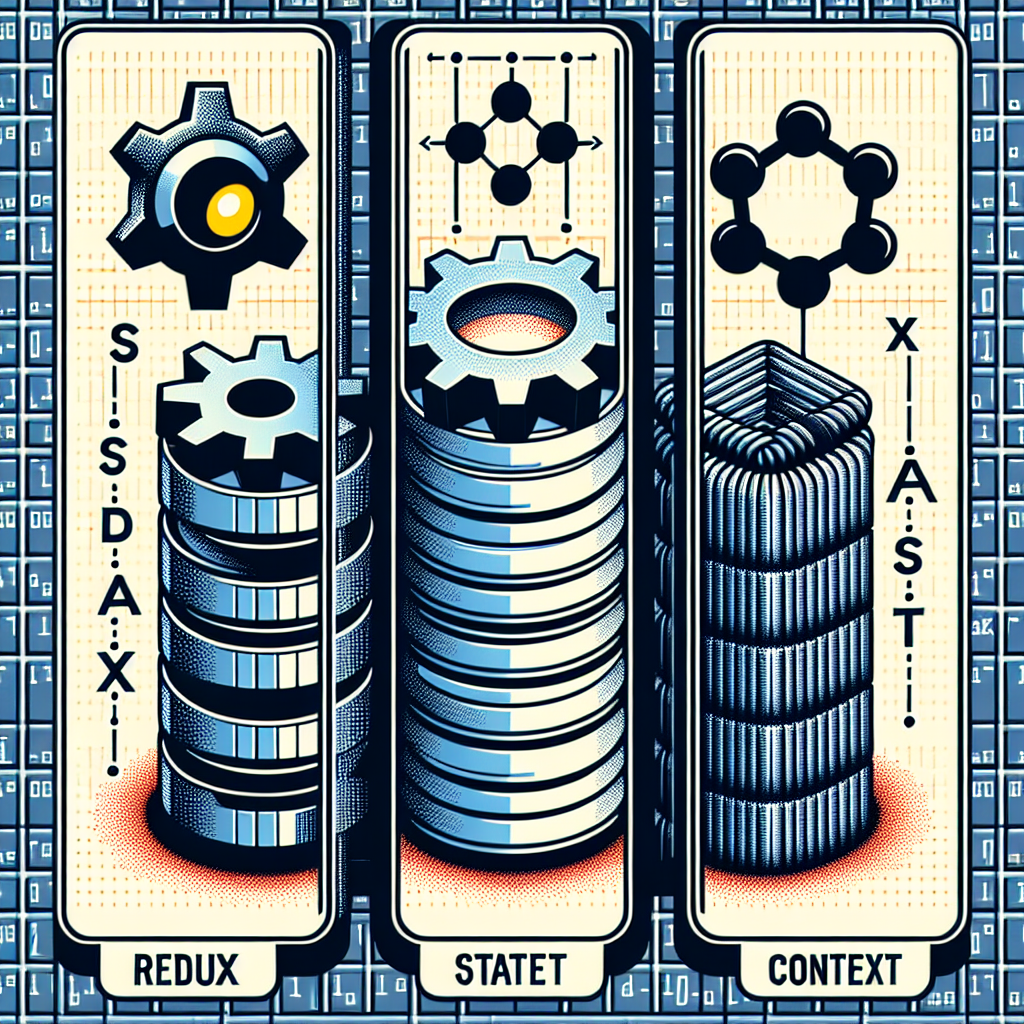State management is a crucial aspect of building scalable and maintainable React applications. As your application grows, managing state becomes increasingly complex. Fortunately, React offers several state management solutions, including Redux, Zustand, and Context API. In this article, we will delve into the intricacies of each, comparing their strengths and weaknesses to help you choose the best solution for your project.
What is State Management in React?
State management refers to the process of handling and organizing the data that changes over time within a React application. Effective state management ensures that your application remains predictable, maintainable, and performant. React provides several built-in and third-party solutions to manage state, each with its own set of features and use cases.
Redux: The Tried and True Solution
Redux is a predictable state container for JavaScript applications. It is widely used in the React ecosystem and has a large community and a wealth of resources. Redux follows a unidirectional data flow and a single source of truth, making it ideal for large and complex applications.
Key Features of Redux
- Centralized State: Redux stores all state in a single, immutable store, ensuring consistency and predictability.
- Unidirectional Data Flow: Data flows in a single direction, making it easier to trace and debug state changes.
- Middleware: Redux supports middleware, which can be used for logging, API calls, and other side effects.
- Developer Tools: Redux DevTools provide powerful tools for debugging and inspecting the state of your application.
When to Use Redux
Redux is best suited for large-scale applications with complex state management needs. It is particularly useful when you have a large team of developers working on the same project, as its strict structure and conventions can help maintain consistency.
Zustand: The Lightweight Alternative
Zustand is a small, fast, and scalable state management solution for React. Unlike Redux, it does not enforce a strict architecture, making it more flexible and easier to set up. Zustand is gaining popularity for its simplicity and performance.
Key Features of Zustand
- Minimal Setup: Zustand requires minimal configuration, making it easy to integrate into existing projects.
- Performance: Zustand is highly performant and efficient, making it suitable for applications that require fast state updates.
- Flexibility: Zustand does not enforce a strict architecture, allowing you to structure your state management in a way that suits your application.
- React Integration: Zustand provides a seamless integration with React hooks, making it easy to use in functional components.
When to Use Zustand
Zustand is ideal for smaller to medium-sized applications or projects where you need a more flexible and lightweight state management solution. It is particularly useful when you want to avoid the overhead of setting up and maintaining a complex Redux architecture.
Context API: Built-In State Management
Context API is a built-in React feature that allows you to pass state through the component tree without having to manually pass props down at every level. While it is not as feature-rich as Redux or Zustand, it is a lightweight and straightforward solution for simple state management needs.
Key Features of Context API
- Built-In: Context API is a native React feature, requiring no additional dependencies.
- Simple Setup: Setting up Context API is straightforward, making it easy to get started.
- Provider and Consumer: Context API uses the
ProviderandConsumercomponents to manage and consume state. - React Hooks: Context API can be used with React hooks like
useContextfor a more modern and functional approach.
When to Use Context API
Context API is best suited for small to medium-sized applications with simple state management needs. It is particularly useful for sharing state across multiple components without the need for prop drilling. However, for more complex state management, you may need to consider other solutions like Redux or Zustand.
Comparing Redux, Zustand, and Context API
When choosing a state management solution for your React application, it is essential to consider the specific needs of your project. Here is a comparison of Redux, Zustand, and Context API:
| Feature | Redux | Zustand | Context API |
|---|---|---|---|
| Centralized State | Yes | Yes | No |
| Unidirectional Data Flow | Yes | No | No |
| Middleware Support | Yes | No | No |
| Developer Tools | Yes | Yes | No |
| Performance | Good | Excellent | Good |
| Setup Complexity | High | Low | Low |
| Community and Resources | Large | Growing | Built-In |
As you can see, each solution has its own strengths and weaknesses. Redux is the most robust and feature-rich, but it requires more setup and maintenance. Zustand offers a balance between flexibility and performance, making it a great choice for many projects. Context API is the simplest and most lightweight, but it may not be sufficient for more complex state management needs.
Conclusion
State management is a critical aspect of building React applications, and choosing the right solution can significantly impact the performance, maintainability, and scalability of your project. Redux, Zustand, and Context API each offer unique features and benefits. By understanding the strengths and weaknesses of each, you can make an informed decision that best fits your project’s needs.
For large and complex applications, Redux is often the best choice due to its robust features and strong community support. For smaller to medium-sized projects, Zustand provides a lightweight and flexible alternative. For simple state management needs, Context API is a straightforward and built-in solution.
Ultimately, the best state management solution is the one that aligns with your project’s requirements and your team’s expertise. By considering the key features and use cases of Redux, Zustand, and Context API, you can make a well-informed decision that will set your React application up for success.












